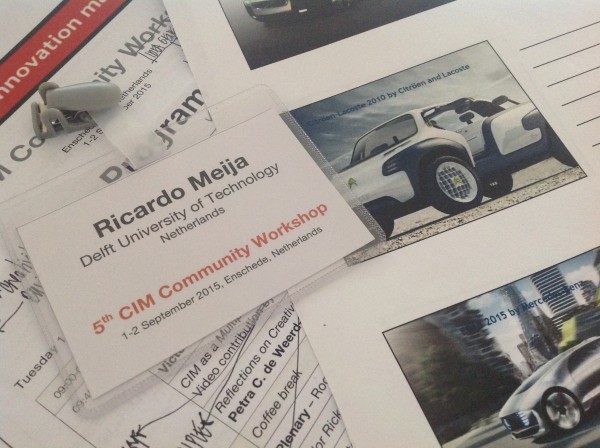Blog
Programa formación de formadores en la gestión efectiva de los activos de la PI en las MIPYMEs
I was invited by the World Intellectual Property Organization (WIPO) and the National Institute of Industrial Property (INPI) of Argentina as an expert lecturer about “industrial design and innovation”. My lectures were part of the Training of Trainers Program on Effective Intellectual Property (IP) Assets Management by Small and Medium-sized Enterprises (SMEs), develop from August 24 to 28, 2015, in Buenos Aires, Argentina.
Tuve la fortuna de ser invitado por la Organización Mundial de la Propiedad Intelectual (OMPI) y el Instituto Nacional de la Propiedad Industrial (INPI) de Argentina como conferencista experto en temas de “diseño industrial e innovación” en el Programa de Formación de Formadores en la gestión efectiva de los activos de la propiedad intelectual en las micro, pequeñas y medianas empresas (MIPYMEs), desarrollado entre el 24 y el 28 de Agosto de 2015 en Buenos Aires.
Anexo las presentaciones y los contenidos de mis charlas abajo de estas lineas.
5th CIM -Creativity and Innovation Management- Community Workshop
I had the opportunity to present the paper “Design of Vision Concepts to explore the future: nature, context and design techniques” during the 5th CIM -Creativity and Innovation Management- Community Workshop, which was held in the campus of the University of Twente, Enschede, The Netherlands on 1 September 2015.
Here the video of Teresa Amabile from Harvard Business School who welcomes the participants of the workshop.
More information about the event here
#CIMjournal
Javier Ricardo Mejia Sarmiento
Official report of the “Design Policy Conference, make a plan”
Report of the “Design Policy Conference, make a plan”, 17 & 18 October, 2014, Cape Town, South Africa. http://wdcdesignpolicyconf2014.com/
In 1994, a research project was instituted in Colombia to study design policies and approaches. The study revealed that 97% of businesses were small and medium enterprises (SMEs). Only 5% of these had a body in place to implement design in their business, and just 2% had funds to invest in design. Believing that designers need to understand the user, and build a bridge between the user and the designer to design workable products and services, there was a need for design, academia and SMEs to lead and catalyse the process of implementing design in business.
A systematic way was needed to apply design to SMEs: design is not only operational – it must be strategic, too. With this understanding, the design policy comprised three steps: knowledge transfer about design through handbooks, manuals, diagnostic tools and workshops to explain the value of design; viewing and promoting successful case studies of local design; and hosting an international co-creation roundtable and other events to ask what the policy should contain.
(Text from the official report of the “Design Policy Conference, make a plan”, 17 & 18 October, 2014, Cape Town, South Africa).
Presentation
The full original document: Design-Policy-Conference-Report
Javier Ricardo Mejia Sarmiento
Strategic PES: Product-Experience-Service, a visual tool to support SMEs through service-dominant logic
The National Design Program, as part of the Ministry of Commerce, Industry, and Tourism of Colombia, promotes “design as an innovation driver for SMEs. The program develops projects, workshops, and provides information in this field within three strategic lines: knowledge transfer, promoting successful cases, and public policies.” The Strategic PES tool, presented in this paper, was developed within the first line to tackle design-driven innovation projects. It has been applied in several workshops and subsequently as part of the Integral Design Tutoring Project.
Keywords: SMEs, Visual thinking, Service-dominant logic.
Read the full paper here.
Cited (APA) as: Mejia Sarmiento, J. R., & Parra, J. (2014). Strategic PES: Product-Experience-Service, a visual tool to support SMEs through service-dominant logic. Touchpoint, The Journal of Service Design, 6(3), 80–85.
Touchpoint Vol. 6 No. 3 – Blurring Boundaries
Service design has gained considerable recognition in recent years, and as a result, there is less “navel gazing” than in its formative years. Kerry Bodine – a regular contributor to Touchpoint – describes service design as encompassing the behind-the-scenes activities that enable companies to deliver customer-oriented services. And with the breadth of these activities continually increasing, service design finds itself working alongside (and influencing) various other disciplines. In the Feature section, service designers share their stories in how their practice is evolving in new and exciting ways. Because when service designers cross paths with practices such as UX design, CX, Lean and Agile, each discipline is strengthened.
Read more about the journal here.
Javier Ricardo Mejia Sarmiento

